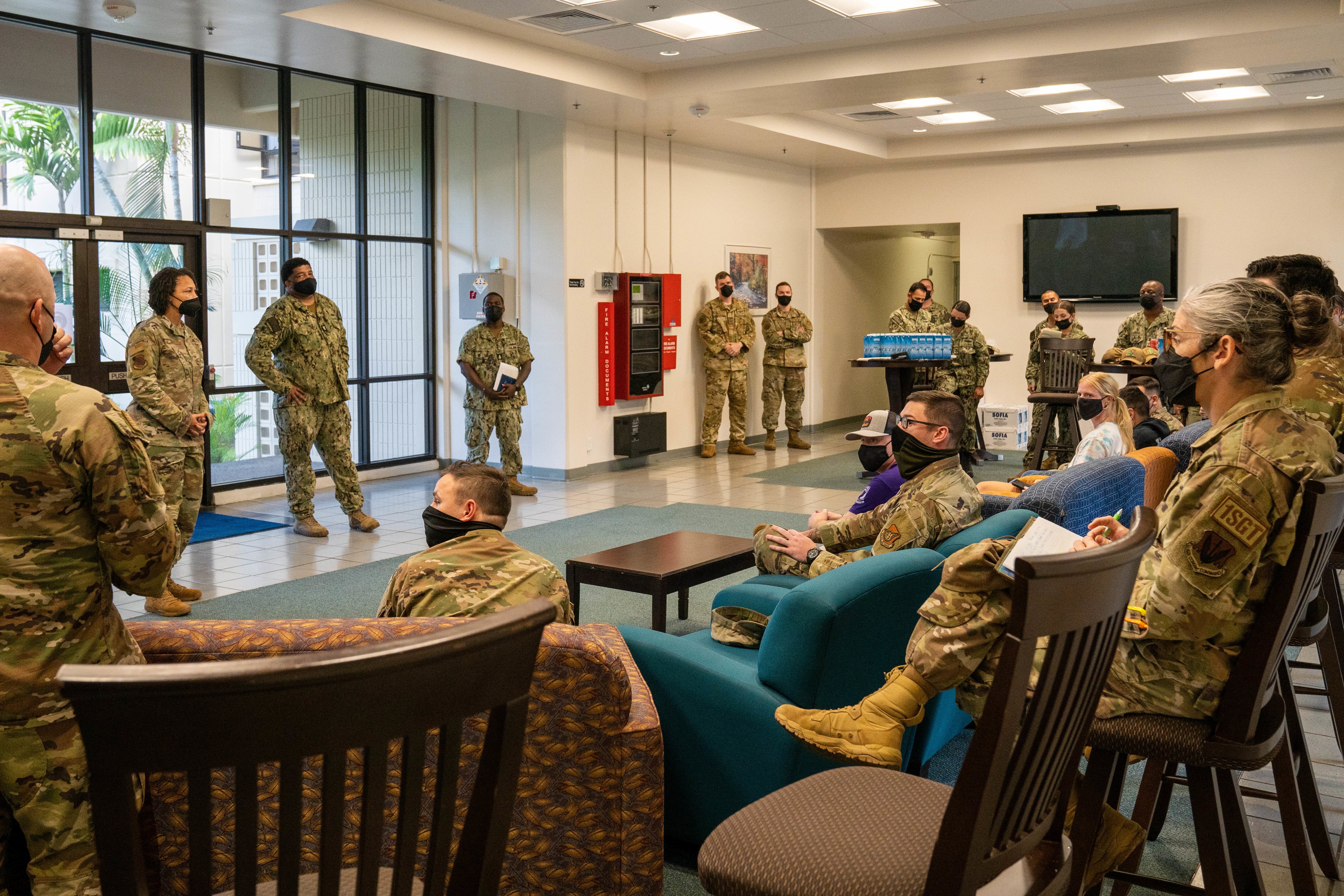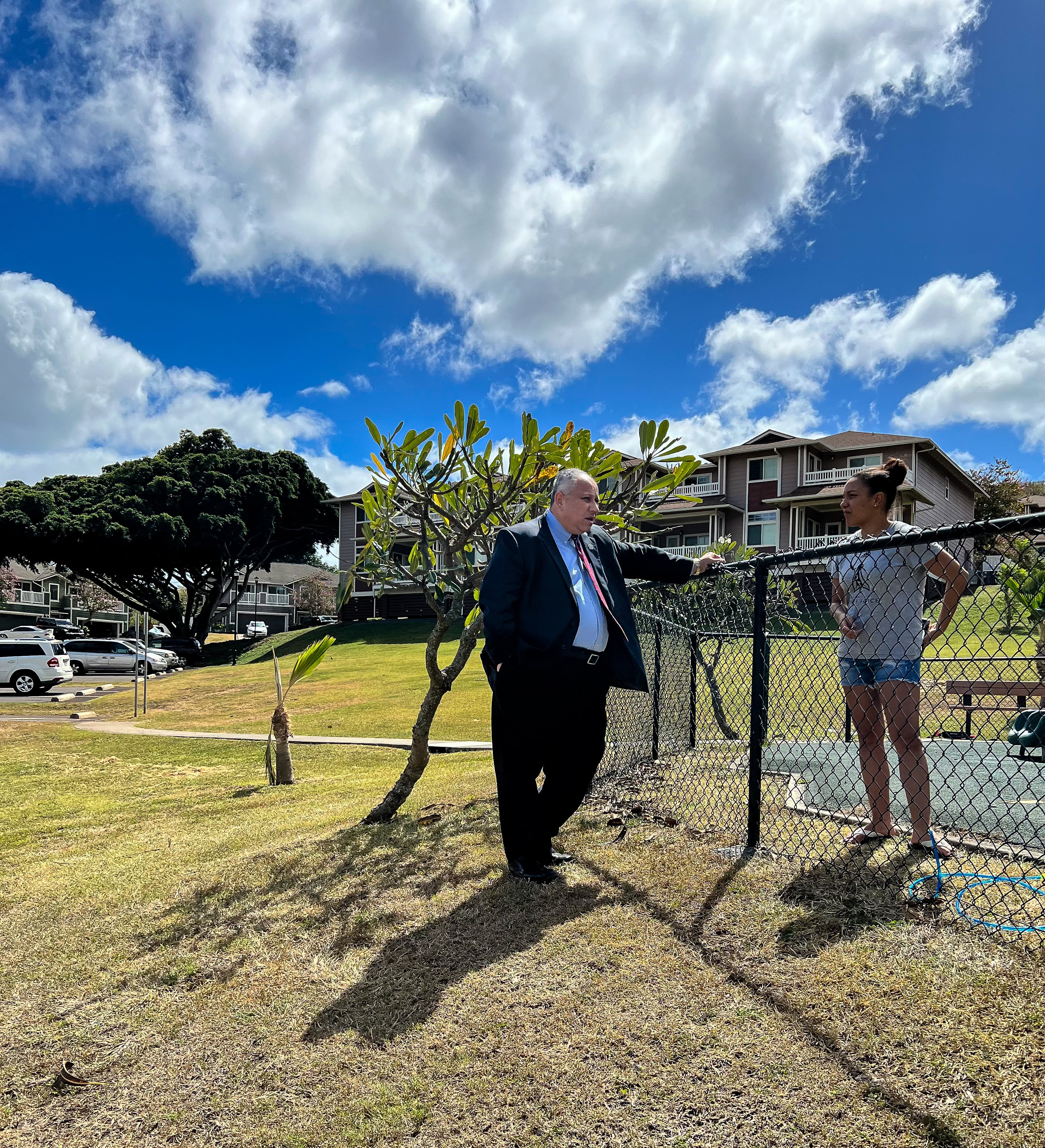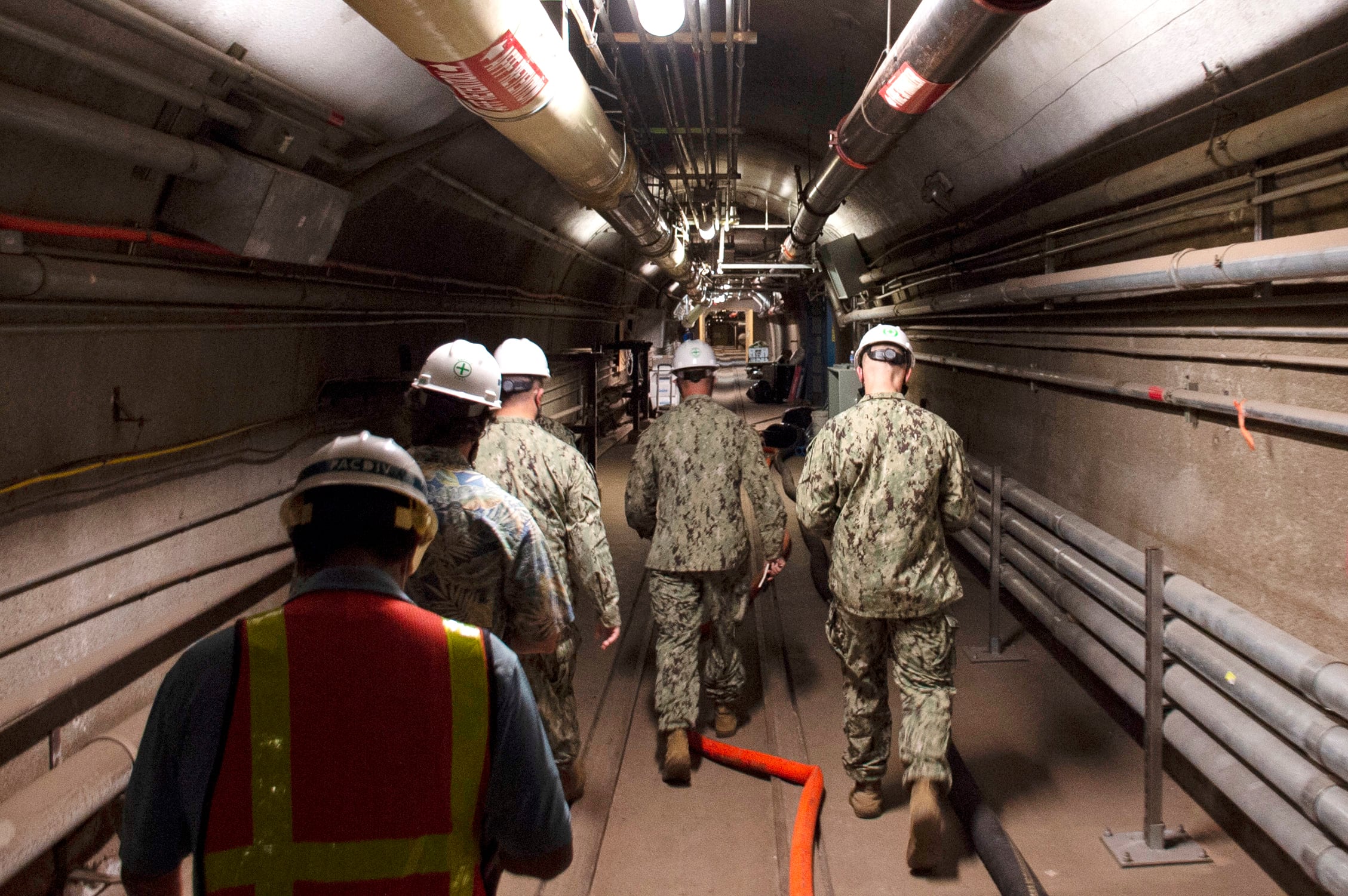Editor’s note: This story has been updated with additional information from Defense Secretary Lloyd Austin and Secretary of the Navy Carlos Del Toro.
The Defense Department will permanently shut down the Navy’s massive fuel tank facility in Hawaii that leaked petroleum into Pearl Harbor’s tap water, and will remove all the fuel, The Associated Press has learned.
A senior defense official said the decision, which Defense Secretary Lloyd Austin made Monday, is based on a new Pentagon assessment, but also is in line with an order from Hawaii’s Department of Health to drain fuel from the tanks at the Red Hill Bulk Fuel Storage Facility. The tanks, built into the side of a mountain during World War II to protect them from enemy attack, had leaked into a drinking water well and contaminated water at Pearl Harbor homes and offices.
“This is the right thing to do,” Austin said in a statement released Monday about the decision.
RELATED

Nearly 6,000 people, mostly those living in military housing at or near Joint Base Pearl Harbor-Hickam were sickened, seeking treatment for nausea, headaches, rashes and other ailments. And 4,000 military families were forced out of their homes and have been in hotels at government expense. Some have chosen to stay in their houses, being supplied with bottled water and bulk water, shower facilities, laundry facilities and other services. The Navy, working with the Hawaii Department of Health and the Environmental Protection Agency, has been removing the fuel from the water distribution system and homes by massive flushing operations, then testing.
To date, the Hawaii Department of Health has declared the water safe to drink in seven out of 19 zones at or near Joint Base Pearl Harbor-Hickam.
The defense official said Austin was speaking with Hawaii government leaders on Monday to inform them of the decision, which he believes will protect the population and the environment, and will also lay the groundwork for a more secure military fueling system.
The military, which has relied in part on fuel from the Hawaii tanks, will now move to a more dispersed fueling system for military ships and aircraft in the Indo-Pacific. Based on the new assessment, the expanded system will be more cost effective and provide greater security by spreading the fuel supply more broadly across the region, said the official, who spoke on condition of anonymity to discuss a decision not yet made public.
The new plan, laid out in recommendations delivered to Austin by a study group, would increase the fuel contracts that the U.S. has with other territories and nations in the Indo-Pacific, and add several more fueling ships that are based at sea. There are currently about a dozen fueling ships, and several more would have to be built.
An assessment team that had been studying how to make the tanks safe to operate, will now shift and determine how to shut the tanks down and remove the fuel in an environmentally safe way.
In Austin’s statement, he said the Secretary of the Navy and director of the Defense Logistics Agency will provide a plan for the “safe and expeditious defueling” of the bulk fuel storage facility, with a completion date target of 12 months. “As soon as we have made corrective actions to ensure that defueling will be safe, we will begin defueling. Then we will move to permanently close the Red Hill facility, including conducting any and all necessary environmental remediation around the facility,” he stated. Throughout the process, defense officials will work closely with the Hawaii Department of Health and the Environmental Protection Agency to safely defuel the facility, he stated.
Austin has asked the Navy secretary to plan a budget for all necessary corrective action for any prior releases from the facility.
Secretary of the Navy Carlos Del Toro issued a statement supporting Austin’s decision to permanently close the Red Hill facility.
“As we are committed to protecting all of the residents of Hawaii, the environment, and the security of our nation, this plan will be developed and implemented in a responsible and safe manner that complies with environment laws and best practices,” Del Toro said. “This work will be done concurrently as we continue to work on the remediation and restoration of safe drinking water and getting our families back in their homes.”
During the Joint Base Pearl Harbor-Hickam daily water update on Monday, Rear Adm. Timothy Kott, commander of Navy Region Hawaii, read Austin’s statement, and told residents current efforts on the ground to restore their safe drinking water will continue. “The number one priority from day one has been taking care of our people. We’ll continue to do that in earnest, providing safe drinking water, to remediate the Red Hill shaft,” he said. That also includes continuing the “best of class, leading testing,” with long-term monitoring of the water. These efforts will continue long after everyone is back in their homes, he said. “We’ll continue far after that to ensure we have this right, and we can address everyone’s concerns that the drinking water is safe and that we restore the environment and the well.”
The tanks can hold 250 million gallons of fuel, and they are at less than half capacity right now.
RELATED

The giant U.S. government fuel storage installation, which has provided fuel to military ships and planes crisscrossing the Pacific Ocean since World War II, was a secret for years. The 20 fuel tanks were built into the mountain ridge to protect them from aerial attacks. Each tank is about the height of a 25-story building and can hold 12.5 million gallons (47.3 million liters.)
The tanks are connected to underground pipelines that send fuel about 2.5 miles (4 kilometers) to Pearl Harbor and to ships and planes used by the Air Force, Army, Coast Guard, Marines and Navy.
The Navy hasn’t determined how petroleum got in the water. Officials are investigating a theory that jet fuel spilled from a ruptured pipe last May and somehow entered a fire suppression system drain pipe. They suspect fuel then leaked from the second pipe on Nov. 20, sending it into the drinking water well.
Once the leak was discovered, Hawaii state officials and members of Congress immediately began to demand the facility be shut down.
The Navy in early February appealed that order, and at the time Deputy Defense Secretary Kathleen Hicks said the appeal would give the military time “to make evidence-based and transparent decisions.”
The team doing the analysis delivered the alternative fueling recommendations to Austin. The official said that it’s not yet clear what the final cost will be.
Karen has covered military families, quality of life and consumer issues for Military Times for more than 30 years, and is co-author of a chapter on media coverage of military families in the book "A Battle Plan for Supporting Military Families." She previously worked for newspapers in Guam, Norfolk, Jacksonville, Fla., and Athens, Ga.





